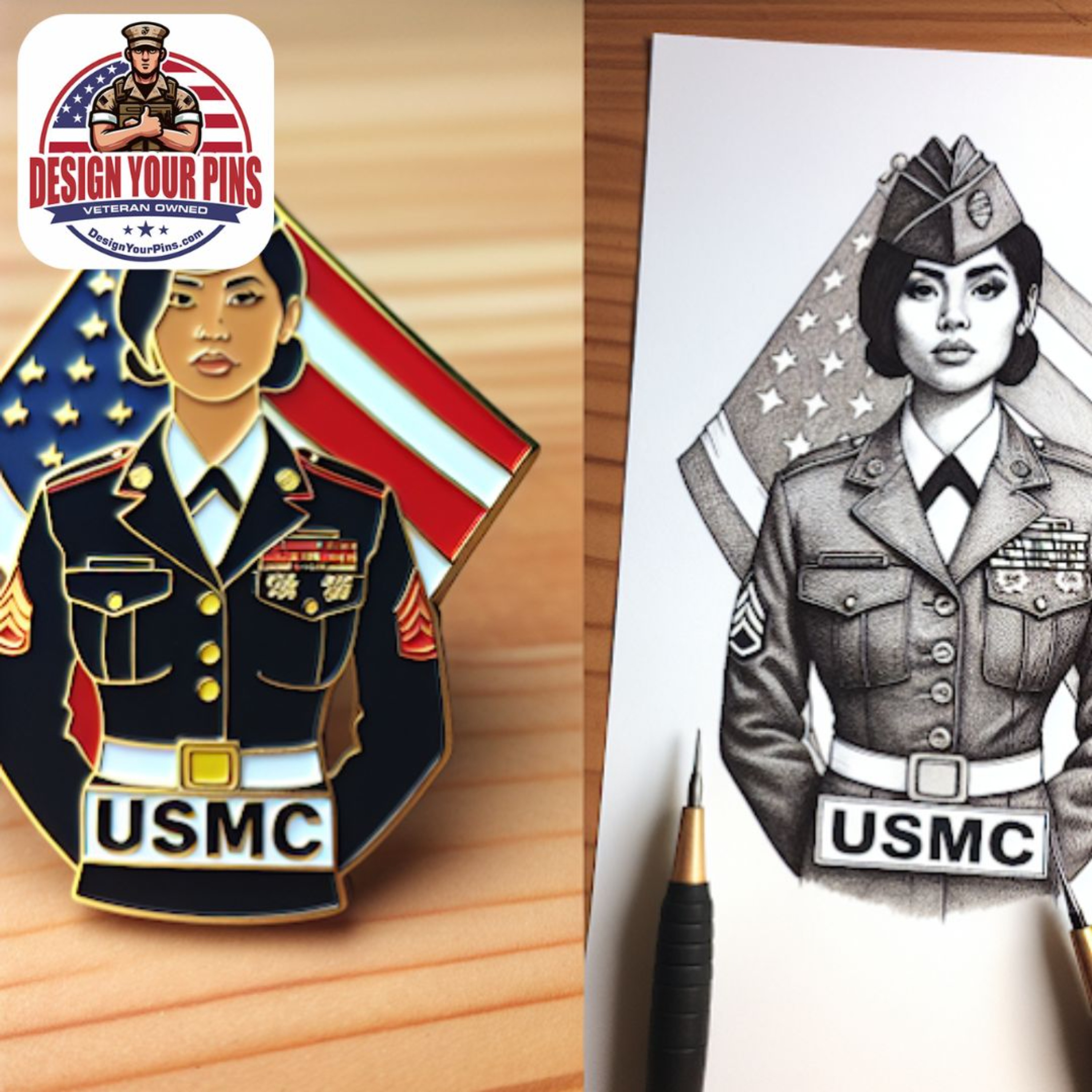Lapel pins have long been a popular accessory for expressing personal style, commemorating events, and promoting organizations. From corporate logos to personal achievements, custom lapel pins offer a unique way to make a statement. This comprehensive guide will walk you through the process of creating custom lapel pins, from conceptualization to ordering, ensuring you end up with high-quality, eye-catching pins that meet your needs.
Understanding Custom Lapel Pins
Custom lapel pins are small, decorative items that attach to clothing, typically worn on the lapel of a suit jacket. They come in various designs, sizes, and finishes, making them versatile for different purposes, such as:
- Corporate Branding: To reinforce company identity and promote brand loyalty.
- Event Commemorations: For weddings, conferences, or special occasions.
- Personal Achievements: To celebrate milestones or show affiliation with a cause or organization.
- Collectibles: For hobbies, interests, or fan bases.
Designing Your Custom Lapel Pin
1. Define Your Purpose
Before starting the design process, clarify the purpose of your lapel pin. Understanding the pin’s role will guide its design, size, and overall look. Consider questions like:
- What is the pin’s primary function? (e.g., promotional, commemorative, or collectible)
- Who is the target audience? (e.g., employees, event attendees, or collectors)
- What message or image should the pin convey?
2. Choose the Type of Pin
There are several types of lapel pins, each suited for different purposes:
- Enamel Pins: Known for their smooth, glossy finish, enamel pins are popular for detailed designs and vibrant colors. They come in soft enamel (where the colors are raised above the metal surface) and hard enamel (where the enamel is leveled with the metal surface).
- Die-Cast Pins: Made from metal and stamped with a design, die-cast pins are durable and have a high-quality finish.
- Printed Pins: These pins use a printed image covered with a protective coating. They are suitable for designs that require detailed, full-color graphics.
- Photo Dome Pins: Feature a high-resolution image protected by a clear dome. Ideal for designs requiring intricate detail and vibrant colors.
3. Design Your Pin
Designing your lapel pin involves several key steps:
- Conceptualize the Design: Start with a rough sketch of your idea. Consider the pin’s shape, size, and design elements. The most common shapes are circular, rectangular, and custom shapes that align with the design’s theme.design your pins
- Choose Colors and Materials: Decide on the colors and materials based on your design and intended use. Enamel pins often use PMS (Pantone Matching System) colors for accurate color reproduction.
- Create a Digital Mockup: Use design software like Adobe Illustrator or free tools like Canva to create a digital version of your design. Ensure your mockup includes all design elements, such as logos, text, and images.
- Consider Size and Detailing: The size of your pin should match the complexity of the design. Small details may be lost on very small pins, so ensure the design remains clear and recognizable.
4. Select a Manufacturer
Choosing the right manufacturer is crucial for ensuring the quality and timely delivery of your pins. Consider the following when selecting a manufacturer:
- Reputation and Reviews: Look for manufacturers with positive reviews and a solid reputation for quality. custom lapel clips
- Capabilities: Ensure the manufacturer can produce the type of pin you need and handle your specific design requirements.
- Pricing: Obtain quotes from multiple manufacturers to compare pricing. Be cautious of prices that are significantly lower than others, as this may indicate compromised quality.
- Production Time: Confirm the production timeline to ensure your pins will be ready when you need them.
5. Place Your Order
Once you’ve selected a manufacturer, follow these steps to place your order:
- Submit Your Design: Provide the manufacturer with your digital mockup and any specific instructions regarding colors, materials, and finishes.
- Review Proofs: The manufacturer will send you a digital proof or a physical sample of your pin. Review it carefully to ensure the design meets your expectations.
- Approve the Proof: Once you’re satisfied with the proof, give your final approval for production to begin.
- Confirm Shipping Details: Provide accurate shipping information and confirm the delivery date.
Tips for Successful Custom Lapel Pins
1. Keep It Simple
While intricate designs can be appealing, simplicity often works best for lapel pins. Clear, straightforward designs are more recognizable and effective in conveying the intended message.
2. Focus on Quality
Investing in high-quality materials and manufacturing processes will result in a better end product. Quality pins are more durable and have a more professional appearance, reflecting positively on your brand or event.
3. Consider Versatility
Design your pins to be versatile and appealing to a broad audience. This ensures that they can be worn in various settings and still be effective in achieving their intended purpose.
4. Plan for Packaging
Consider how your pins will be packaged. Attractive packaging can enhance the perceived value of your pins and make them more memorable. Options include custom backing cards, boxes, or plastic sleeves.
5. Test Your Design
Before placing a large order, consider producing a small batch or sample run. This allows you to test the design’s effectiveness and make any necessary adjustments before committing to a larger quantity.
Using Custom Lapel Pins Effectively
1. Promotional Events
Distribute lapel pins at trade shows, conferences, or corporate events to increase brand visibility and engagement. Pins can serve as conversation starters and keep your brand top-of-mind.
2. Employee Recognition
Use lapel pins to recognize employee achievements or milestones. Custom pins can symbolize awards, anniversaries, or special contributions, fostering a sense of pride and belonging among employees.
3. Fundraising and Awareness
Nonprofits and advocacy groups can use lapel pins to raise awareness for causes or to support fundraising efforts. Pins serve as a tangible representation of support and can encourage others to get involved.
4. Personal Use
Create custom lapel pins for personal use, such as celebrating hobbies, interests, or special occasions. Pins can be a unique and personal way to commemorate significant life events.
Conclusion
Creating custom lapel pins is a rewarding process that allows you to produce unique, high-quality items for a variety of purposes. By carefully considering your design, choosing the right manufacturer, and following best practices, you can ensure that your pins effectively represent your brand or commemorate your event. Whether for promotional use, employee recognition, or personal keepsakes, custom lapel pins offer a lasting and impactful way to make a statement. So, get started on your design today, and let your creativity shine through in every pin








Leave A Comment